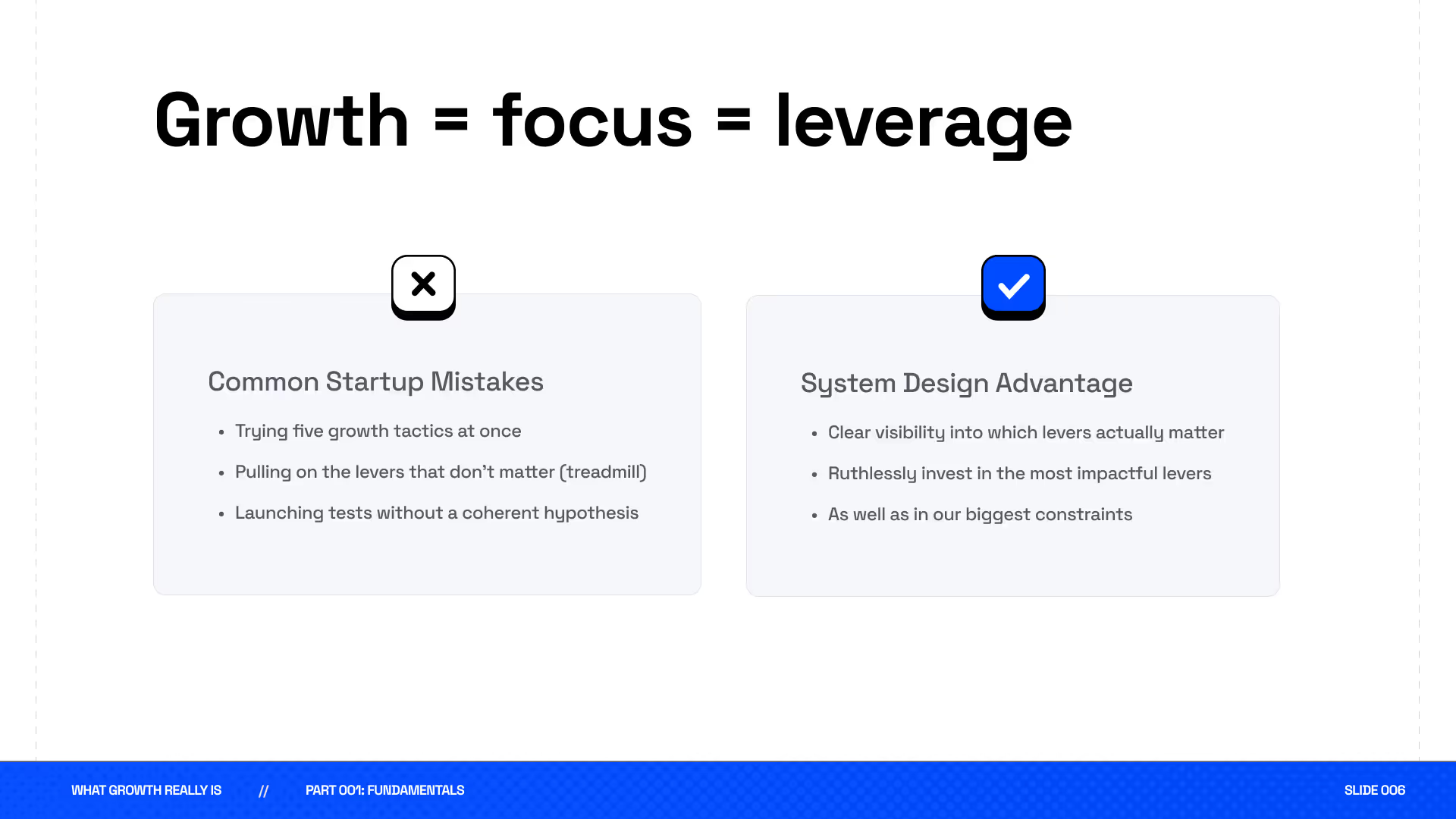
Conversation

🥳 Feedback Received!
Thanks for taking a moment to share your thoughts — it genuinely helps us make each chapter sharper.
What happens next:
- Your feedback goes straight to our product team.
- We’ll use it to refine lessons, clarify examples, and make the program even more useful.
Appreciate you helping make this program better for everyone.
Ready for your next challenge? 👇
Growth = focus = leverage
In many ways, growth is all about identifying leverage. In the startup stage, leverage is our best friend. How else are we supposed to compete against incumbents with endless resources?
The Common Mistake
Yet an all-too-common startup mistake is trying to do too much at once. They mistake activity for progress. They cast far too wide a net, which exposes them to false negatives.
Think about it:
If you try to do too many things at once without the resources or the experience to execute them at a high level, you not only waste precious resources and time, you come away with the wrong learnings.

Quick Story
We were talking with a founder recently who told us that Meta ads do not work for them. When we looked into the experiment, we saw that they had spent about $2,000 on Meta ads over the course of five months (and they were breaking pretty much every best practice you can think of).
Once we saw this, we explained our DC system. We showed them the same frameworks you’re learning now and how every signal was pointing towards Meta being one of the most promising channels for them.
And once we received the thumbs up to retest it, it became one of their largest growth driver.
The real point of this story:
Had they not met with us, they may have continued to believe that what was essentially their best growth channel had been invalidated purely because they did not take the time to experiment properly.
How to Apply This
Simple: do less, but with more intent.
Flip the order of operations. Spend more time designing and assessing your system to create and identify leverage.
This is where flywheels come back in.
As we discussed in the DC Growth System, our primary goal is to build a flywheel that can power our growth engine.
And flywheels are heavy machinery. Once spinning, they compound and become nearly unstoppable. But they require a lot of energy to get them moving.
As a startup, relatively speaking, you don’t have a ton of energy as it is (much less to waste, by the way). Which means we have to ruthlessly focus that limited energy on our critical leverage points.
The Point
But flywheels aside (because right now that may not be the best place to focus), the point is that the last thing we want to do is cast a wide net.
Your job is to channel your resources into the places that maximize our leverage. Big or small.
That could mean validating whether a growth catalyst flywheel exists in your business, proving out an engine-level flywheel in acquisition or retention, or, as we just covered, running focused experiments to discover your points of leverage.


